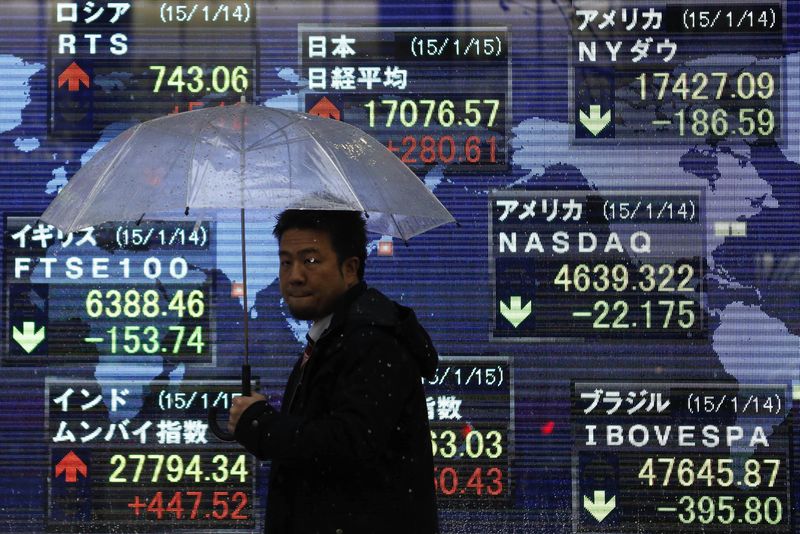This post was originally published on this site
https://i-invdn-com.investing.com/news/LYNXMPEB0I07L_M.jpg
Investing.com – Asia Pacific stocks were mostly down on Monday morning, with investors continuing to assess the economic growth outlook for the world’s largest economies and whether a recent selloff will continue.
Japan’s Nikkei 225 gained 0.45% by 10:25 PM ET (2:25 AM GMT), while South Korea’s KOSPI inched down 0.01%.
In Australia, the ASX 200 inched up 0.05%. Saturday’s election that delivered a clear victory for Australia’s Labor Party gave the Australian dollar a boost, and Anthony Albanese was sworn in as the country’s 31st prime minister earlier in the day.
Hong Kong’s Hang Seng Index fell 1.29%.
China’s Shanghai Composite was down 0.44% and the Shenzhen Component was down 0.32%. The People’s Bank of China held the one-year loan prime rate (LPR) at 3.7%, but cut the five-year LPR to 4.45%, on Friday.
Nasdaq 100 and S&P 500 futures rose about 1%, but the S&P 500 fell for a seventh consecutive week in a stretch of weakness unseen since 2001.
U.S. Treasuries gave up some of Friday’s gains, with investors debating the U.S. Federal Reserve’s tighter monetary policy as concerns continue to grow about an economic slowdown.
However, uncertainty remains as concerns about slowing economic growth and the ongoing war in Ukraine, perpetrated by the Russian invasion on Feb. 24. Commodity prices remain elevated due to the war, while supply chains remain disrupted due to ongoing COVID-19 restrictive measures in China.
“As macro-economic concerns stemming from aggressive monetary tightening, the Russia-Ukraine conflict, and China’s stringent COVID-19 lockdowns persist, we anticipate great volatility in the market,” Federated Hermes (NYSE:FHI) Ltd. portfolio manager global equities Louise Dudley said in a note.
Investors now await the minutes from the last Fed meeting, due on Wednesday. St. Louis Fed President James Bullard said the central bank should front-load a series of interest rate hikes to push rates to 3.5% at the end of 2022, which if successful would curb inflation and could lead to easing in 2023 or 2024.
Atlanta Fed President Raphael Bostic and Kansas City Fed President Esther George are also due to speak later in the day.
Across the Atlantic, European Central Bank (ECB) Governing Council members Robert Holzmann and Joachim Nagel will be joined by Bank of England Governor Andrew Bailey to discuss inflation at an event later in the day
Meanwhile, the Reserve Bank of New Zealand will hand down its policy decision on Wednesday, with the Bank of Korea following a day later.
On the data front, the Eurozone manufacturing and services purchasing managers’ indexes (PMIs) are due on Tuesday, with the ECB publishing its Financial Stability Review a day later.
U.S. new home sales, as well as the manufacturing and services PMIs, are due Tuesday, with the GDP due on Thursday. The Core Personal Consumption Expenditure (PCE) prices index and the University of Michigan consumer sentiment will follow a day later.

